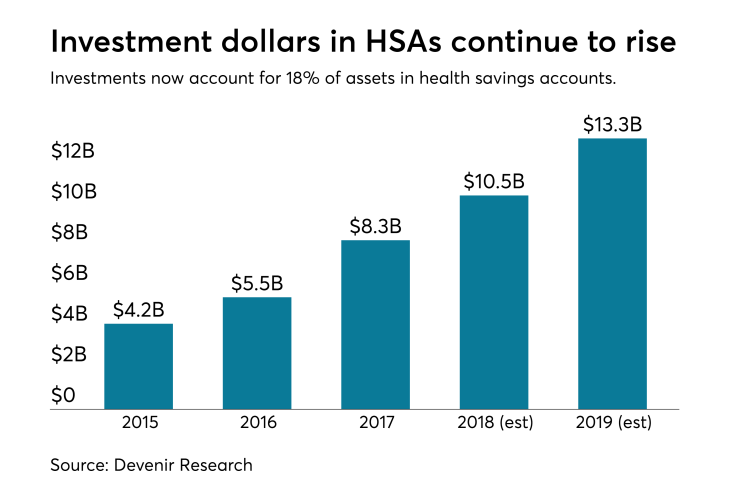With healthcare open enrollment season approaching, employees electing a high-deductible health plan will soon have an opportunity to decide how much to contribute to their health savings account for next year.
My advice?
Employers should tell employees to contribute as much as they possibly can. And they should prioritize their HSA contributions ahead of their 401(k) contributions. I believe that employees eligible to contribute to an HSA should max out their HSA contributions each year. Here’s why.
HSAs are triple tax-free. HSA payroll contributions are made pre-tax. When balances are used to pay qualified healthcare expenses, the money comes out of HSA accounts tax-free. Earnings on HSA balances also accumulate tax-free. There are no other employee benefits that work this way.
HSA payroll contributions are truly tax-free. Unlike pre-tax 401(k) contributions, HSA contributions made from payroll deductions are truly pre-tax in that Medicare and Social Security taxes are not withheld. Both 401(k) pre-tax payroll contributions and HSA payroll contributions are made without deductions for state and federal taxes.
No use it or lose it. You may confuse HSAs with

Paying retiree healthcare expenses. Anyone fortunate enough to accumulate an HSA balance that is carried over into retirement may use it to pay for many routine and non-routine healthcare expenses.
See also:
HSA balances can be used to pay for Medicare premiums, long-term care insurance premiums, COBRA premiums, prescription drugs, dental expenses and, of course, any co-pays, deductibles or co-insurance amounts for you or your spouse. HSA accounts are a tax-efficient way of paying for
No age 70 1/2 minimum distribution requirements. There are no requirements to take minimum distributions at age 70.5 from HSA accounts as there are on 401(k) and IRA accounts. Any unused balance at your death can be passed on to your spouse (make sure you have completed a beneficiary designation so the account avoids probate). After your death, your spouse can enjoy the same tax-free use of your account. (Non-spouse beneficiaries lose all tax-free benefits of HSAs).
Contribution limits. Maximum annual
HSAs and retirement planning. Most individuals will likely benefit from the following contribution strategy incorporating HSA and 401(k) accounts:
1. Determine and make the maximum contributions to your HSA account via payroll deduction. The maximum annual contributions are outlined above.
2. Calculate the percentage that allows you to receive the maximum company match in your 401(k) plan. Make sure you contribute at least that percentage each year. There is no better investment anyone can make than receiving free money.
You may be surprised that I am prioritizing HSA contributions ahead of employee 401(k) contributions that generate a match. There are good reasons. Besides being triple tax-free and not being subject to age 70 1/2 required minimum distributions, these account balances will likely be used every year. Unfortunately, you may die before using any of your retirement savings. However, someone in your family is likely to have healthcare expenses each year.
3. If the ability to contribute still exists, then calculate what it would take to max out your contributions to your 401(k) plan by making either the maximum percentage contribution or reaching the annual limit.
4. Finally, if you are still able to contribute and are eligible, consider contributing to a Roth IRA. Roth IRAs have no age 70 1/2 minimum distribution requirements (unlike pre-tax IRAs and 401(k) accounts). In addition, account balances may be withdrawn tax-free if certain conditions are met.
The contributions outlined above do not have to be made sequentially. In fact, it would be easiest and best to make all contributions on a continual, simultaneous, regular basis throughout the year. Calculate each contribution percentage separately and then determine what you can commit to for the year.
Investing HSA contributions important
The keys to building an HSA balance that carries over into retirement include maxing out HSA contributions each year and investing unused contributions so account balances can grow. If your HSAs don’t offer investment funds, talk to your human resources department about adding them.
HSAs will continue to become a more important source of funds for retirees to pay healthcare expenses as use of HDHPs becomes more prevalent. Make sure you maximize your use of these accounts every year.





